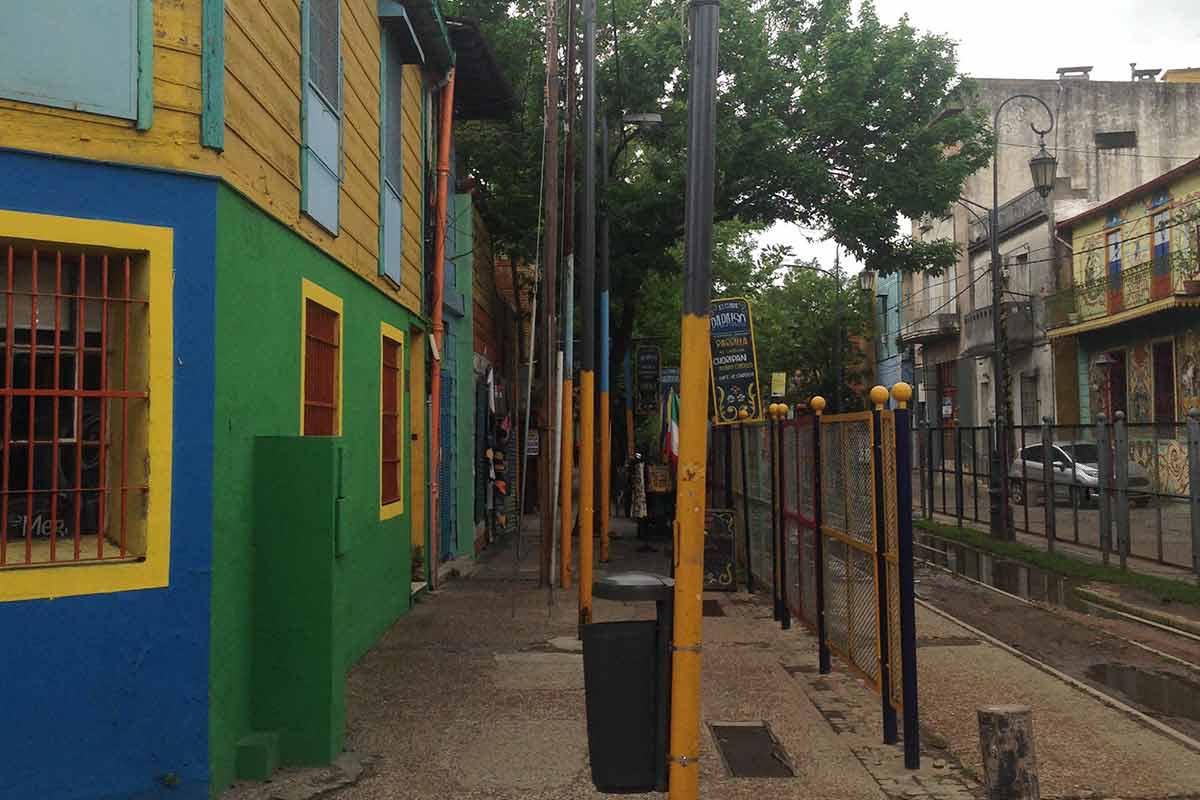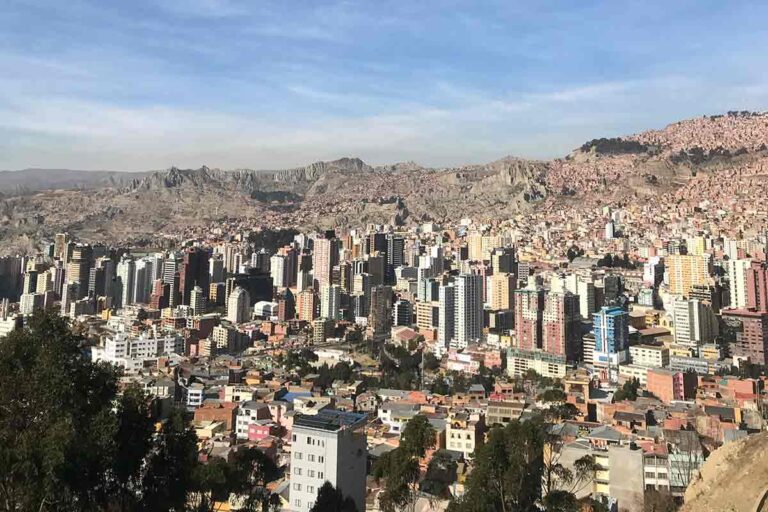Is Buenos Aires Safe?
Welcome to our Buenos Aires safety guide.
A bucket list city for most travelers heading to South America, the Argentinian capital has tonnes going for it.
Here we can visit impressive sights such as the Recoleta Ceremony and the Teatro Colón, as well as try out a Tango dancing class (or watch the locals put on quite the show).
The cuisine here is also pretty good too, and we can find numerous food experiences and tours that are great to take part in.
Buenos Aires Quick Summary:
- 📍 Where is it: Eastern Argentina
- 🗺 Difficulty Getting There: Very Easy
- ⏱ Time needed: 3-6 Days
- ☀️ Best Time to Visit: March-April, September
Is Buenos Aires Safe?
In this comprehensive guide, we’ll explore everything you’ll need to know about Safety in Buenos Aires as a backpacker or traveler.
We’ll look at all the different factors, our top safety tips, other useful information as well as an FAQ section where we answer your key questions.
Is Buenos Aires Safe Right Now?
Quick Answer: Although a generally safe city (as well as for the country too), Buenos Aires does have its unsafe areas. These mostly included the shanty towns near Retiro, however you’ll also want to be careful in the popular touristy area of La Boca (especially at night).
Aside from these, Buenos Aires overall is pretty safe to visit. You’ll feel this especially if coming south from Brazil, where the cities here often feel overwhelmingly big and can be pretty unsafe in various barrios.
You’ll still want to follow our usual safety tips which include keeping your phone in your front pocket, as well as not walking into unknown neighborhoods or areas at night by yourself.
Where to Stay in Buenos Aires
Buenos Aires is a pretty big city, so naturally there will be better areas to stay in (as well as those to avoid). The best areas for a stay include Recoleta, Palermo and Boca.
Those on a frugal backpacking budget will want to stay at the Mons Hostel. Here you’ll have your own deluxe dorm bed (with curtains and a sealed-off pod for privacy), as well as being located in the heart of the Recoleta district.
If you’re looking for a more deluxe accommodation, then we suggest staying at the Hostel Sweet Home Palermo Soho. Here you’ll have your own private room, as well as having an on-site restaurant to enjoy for convenience. You’ll also be staying within the classy neighborhood of Palermo too.
Things to do in Buenos Aires
Not only is the Argentinian capital really easy to access, it’s also home to a range of incredible attractions – making it the perfect place to kick off a journey through this portion of South America.
Among the many famous landmarks here we can firstly visit the Obelisk statue which is an iconic monument, as well as other architectural delights such as the Cabildo, Casa Rosada and Metropolitan Cathedral. It’s also worth visiting La Recoleta Cemetery, which is a maze of large burial temples and has many famous and important figures buried here.
Buenos Aires also has a really distinct culture too. La Boca is a great neighborhood to see classic life in Buenos Aires, along with rows upon rows of brightly coloured buildings. You’ll also find many novel experiences to have in the capital, including going on a food tour, dancing Tango as well as watching a heated local football match.
For these reasons we highly recommend adding Buenos Aires onto any Argentina backpacking itinerary that you may be planning.
Is Buenos Aires Safe to Visit?
Buenos Aires Travel Warnings
There are no major current risks right now, however there are certainly things that you’ll want to watch out for.
Recently there has been an increase of muggings and robberies, especially in and around La Boca neighborhood (which is a popular district for tourism) – so be careful when coming here especially at night.
Crime in Buenos Aires
As previously mentioned, crime is on the rise here in Buenos Aires. You will of course still find many safe areas to stay in and explore (such as Recoleta and Palermo), however you’ll still want to keep your guard raised.
Much of the crime is related to opportunistic criminals, who act out of desperation more than anything else (given the economic situation in Argentina is getting worse). For this reason it is essential to avoid making yourself a target – which includes not dressing up extra fancy unless taking cabs to get around, and also not walking with your phone out in your hand.
Safety in Buenos Aires during the day
In popular districts like Palermo you can walk around freely and feel pretty safe during the day. This is because these areas cater to tourism, and also have a heightened police presence. This is also the same in and around the neighborhood of Recoleta.
In areas like Boca and Retiro you also can, however you’ll still need to have your guard raised and dress humble. In Boca this means not veering too far away from Caminito Street, and in Retiro you definitely don’t want to enter into the shanty town areas!
In general though Buenos Aires is pretty safe during the day – you’ll just need to remember a couple of safety tips such as keeping your phone in your front pocket as well as not walking off into unknown barrios alone.
Buenos Aires Safety at Night
Buenos Aires remains very busy at night, so in general the busier areas are safer where occurrences like muggings are rare (given there are more police and other people around). Having said that, you’ll want to be careful when walking along the Avenida 9 de Julio, given pickpocketing has become more of an issue in recent times.
If going out to bars or clubbing for the night, then it’s wise to use taxis to get to and from. Of course in areas like Palermo and Recoleta you’ll be fine, however if dressing up extra fancy then it’s always worth avoiding an extra issue if possible.
Everywhere else you’ll want to be extra vigilant, sticking to busy and lit areas as well as not taking valuable possessions out with you when walking around. If you do have to carry items with you, strap a money belt like this one to yourself to help conceal your valuables.
Got travel insurance for Argentina?
7 Safety Tips for Buenos Aires
Below we will list 7 of our top safety tips for when heading to Buenos Aires.
Stay in the areas of Palermo or Recoleta
These are by far the safest neighborhoods for a stay, and also full of great amenities for tourists including top restaurants, nightlife and attractions. Although many places here will be expensive, you can find quality accommodation for cheap prices too if you look around well (we’ve included some great options earlier in this article).
Leave Valuables in Your Accommodation When Heading out to Explore
Even if going for a stroll in Palermo, it’s still wise to do this to get in the habit. For other areas of Buenos Aires this is a must, given petty theft and muggings are on the rise. This means leaving things like your passport, credit cards (always better to carry cash – or just one card) and expensive jewelry back in your apartment.
Take out Solid Travel Insurance
Although the risks are quite low in Buenos Aires when following the advice in this article, unfortunately we can’t prevent everything. That’s where having a great travel insurance provider will come in handy in case you need to reclaim expenses for any stolen items (or for any other potential incidents).
World Nomads offers simple and flexible travel insurance. Buy at home or while traveling and claim online from anywhere in the world.
Be Careful when Drinking Tap Water
Although we usually say all tap water is bad in Latin America (which is mostly true), here in Buenos Aires it is much safer. If staying in a nice hotel then it is probably fine (be sure to ask before though), although anywhere else it’s much safer to drink from sealed bottles of water. If you do drink tap water, remember to stop doing so if you then travel onwards through other regions (such as Northern Argentina).
Avoid Carrying Large amounts of Cash or Credit Cards with You
Essentially the more you carry the more you can lose, and is definitely not a good idea when heading out for a long day of exploring. Recently there has been an increase in express kidnappings too, so be extra careful when walking outside of the main touristy areas of Buenos Aires.
Don’t Walk with your Phone in Your Hand
Petty theft remains the biggest issue in the city, and nothing is easier for them than a quick pinch of an unsuspecting tourist with their phone out in their hand. They’ll usually be clever with other ploys (such as accidentally bumping into you and apologizing whilst someone steals your phone from behind). Always keep your phone in your front pockets (or inside your Pacsafe under your clothing ) where it’s usually the safest.
Use Ubers to get around
Taxis are generally safe in Buenos Aires, however there have been issues of express kidnappings before (as well as the more common problem of being overcharged as a tourist for your fare). Using Uber is much safer, where you’ll also get fair rates on your rides around the city.
Buenos Aires Safety FAQ Guide:
Is Buenos Aires Safe? Final Words
And that’s all for our guide on how to stay safe in Buenos Aires. This incredible Argentinian city is a must-visit when traveling in this region of South America.
Here we can tuck into some of the best food on the continent, see a variety of picturesque city highlights as well as getting to know the local culture on a more intimate level.
Overall Buenos Aires is a safe city to visit, and especially so in the touristy neighborhoods such as Recoleta and Palermo. Again, you’ll still need to follow our safety tips (especially at night), however you’ll have a great time here as long as you keep using common sense.
In this guide, we’ve explored the current safety situation in Buenos Aires, which includes whether it’s safe to visit, as well as any current travel advisories.
As well as looking at the best things to do in Buenos Aires, we’ve also included our FAQ which answers your most burning questions.
While you’re still here, be sure to read our Backpacking Argentina Itinerary to learn more about what you can do when in this epic South American nation.
👉🏽 P.S. If you’ve found this guide helpful, buy us a coffee here to say thanks! Or, support us by downloading our South America Travel Bible to get our best content.
“Dear traveler! Some links in this post contain affiliate links. Meaning, if you click through and make a purchase, book a hostel or sign up for a tour, we may earn a small commission at no additional cost to you. Your support means a lot and helps us to carry on traveling and maintaining the quality of this site for you.”















